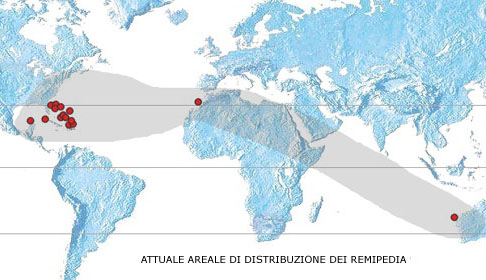I Remipedia rappresentano una classe di crostacei molto primitivi descritta da Jill Yager (1980) su materiale proveniente da grotte anchialine dell' area Caraibica (Grand Bahama Island). Si tratta di crostacei stigobionti, liberamente natanti, presenti in grotte anchialine, con basso tenore di ossigeno.
Risultano ampiamente distribuiti in habitats anchialini legati all'antico mare della Tetide (West Indies, Bahamas, Mexico, Cuba, Canary Islands, Cape Range Peninsula, Western Australia). Attualmente sono noti due ordini (Nectiopoda, Enantiopoda) e 18 specie suddivise in tre famiglie (Speleonectidae, Godzillidae, Micropacteridae).
Studiando l'enigmatica e controversa filogenia dei Remipedia, Steffen Harzsch e colleghi hanno effettuato un'analisi istologica dettagliata e una ricostruzione del cervello del remipede Godzilliognomus frondosus (il nome proviene dal protagonista dei celebri film di mostri giapponesi).
In un articolo pubblicato sulla rivista "Proceedings of the National Academy of Sciences", i ricercatori riferiscono che i cervelli di G. frondosus sono sorprendentemente complessi se si considera l'antichitą della specie e i suoi movimenti lenti.
Il cervello, estremamente organizzato e differenziato, comprende una grande regione olfattiva e presenta una complessitą paragonabile a quella dei cervelli di crostacei "superiori". Gli autori suggeriscono che i Remipedia possano essere parenti prossimi dei Malacostraca (granchi, gamberi, aragoste) e persino degli Esapodi (insetti).
All Rights Reserved. Text and images on this website may not be redistributed or put
   |

